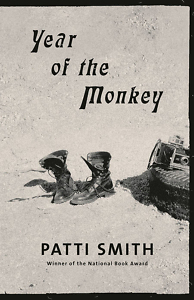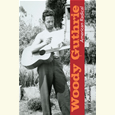The Fringe of Dream
Patti Smith chronicles her idiosyncratic path through the creative life in Year of the Monkey
Whether she’s performing riotous sets with her band or working side by side with revered literary lights, Patti Smith has forged a role in our arts culture unlike any other. As evidenced by the travels depicted in her most recent memoir, Year of the Monkey, Patti Smith has embodied the nomadic spirit of the public troubadour for decades. She calls to us from a territory she describes as “the fringe of dream.”

Through the merging of literature and rock ‘n’ roll, Smith has left a trail of formidable works and inspired others to expand their vision. Case in point: Smith’s scheduled appearance this month at Big Ears, the annual arts festival held in Knoxville, motivated the organizers to feature literary programming for the first time. (This year’s Big Ears festival has now been canceled due to COVID-19 precautions.)
Cross-pollination of artistic forms has figured into Smith’s creative vision since her early years in 1970s New York, making art in the shambling rooms of the Chelsea Hotel alongside photographer Robert Mapplethorpe, playwright Sam Shepard, poet Allen Ginsberg, and novelist William Burroughs. Her rock performances grew organically out of her first poetry readings.
When announcing that Smith will receive this year’s PEN America Literary Service Award, PEN President and Pulitzer Prize winner Jennifer Egan called Smith “a polestar” of her own youth, who “set an example of badass female artistry, coupled with deeply principled humanity.” Egan has written about her adolescent Smith fandom in the mid-70s, coming alive to Smith’s legendary debut album, Horses: “She was doing more than singing — she was showing us a way to be in the world: fragile but tough, beautiful and ugly, corrupt and innocent.”
I was born in the late 70s, at the very moment Smith chose to step away from public life, not performing live for 16 years. As I reflect on the turning path her work has made around my life, I picture a glittering spray of celestial gifts. As inimitable as planets, as unstoppable as comets — that’s how her voice seemed when she first came roaring out of the dull politeness of the radio. She came straight toward me, mouth first, growling at what she called “the summer cannibals.”
The DJ that day delivered the mythology of Patti Smith right behind the bright blaze of her song: An oracle from the Chelsea. A muse and a chum to famous male artists. A voice made for protest and radical times. A voice that married the sacred to the profane. A voice that had gone quiet for a husband and kids in the quiet outskirts of Detroit.
 That last part proved less true, though. In the era I first heard her, when she was in her early 50s, the deaths of her husband and brother, weeks apart, had played a role in launching her back into public life. During those private years, she’d been developing her writer’s discipline, and that commitment fueled the public role awaiting her as a vagabonding literary troubadour. She’d found a viable, long-haul path through the artist’s life — something I was already trying to discover for myself.
That last part proved less true, though. In the era I first heard her, when she was in her early 50s, the deaths of her husband and brother, weeks apart, had played a role in launching her back into public life. During those private years, she’d been developing her writer’s discipline, and that commitment fueled the public role awaiting her as a vagabonding literary troubadour. She’d found a viable, long-haul path through the artist’s life — something I was already trying to discover for myself.
Twenty years later, Smith’s singular dedication to the artist’s life — to her shamanistic, idiosyncratic vision — has galvanized the creative spirits of countless readers and listeners. Just Kids, Smith’s tender remembrance of her loving relationship with Mapplethorpe, has become a touchstone in modern memoir since its publication in 2010. Under its hypnotic spell, we are held safe (even when its young lovers are not). Under that spell, we can grieve our losses, sweat out our fevers, and mend the tears across our hearts. Likewise, Smith’s touching performance of Bob Dylan’s “A Hard Rain’s A-Gonna Fall” at the 2016 Nobel Prize ceremony moved many to tears, her vulnerability bearing witness to music’s alchemical power in a volatile world.
Smith’s latest dispatch from her nomadic travels, Year of the Monkey, also reflects the surreal confusion of our fractured, threatening era. Invoking the improvisatory spirit that has always driven Smith’s songwriting and performing, Monkey details the personal losses and political despair she experienced throughout 2016. Her account tracks the wanderings of an inveterate road dog, seeking understanding and connection but finding only the obscure revelations found in dreams.
Monkey’s opening pages send Smith off alone to the Santa Cruz coastline after a string of New Year’s shows. There, she checks into what she calls the Dream Motel. In the surreal landscape of Smith’s interior world, this motel morphs into a far larger, more powerful entity than a mere place to stay. And she does dream: “More precisely, I skated along the fringe of dream.”
The motel’s sign seems to speak to her. Reappearing in scenes throughout the course of the book, the sign becomes her “clairvoyant nemesis,” confronting her about her own motivations and the dire complexity of what she witnesses unfold in the world around her, wherever she goes. Her travels provoke, even in quiet moments, when “all is but an intermission, of small and tender consequence.”
Threaded through Smith’s year is deep concern for two old friends nearing the end of their lives. Journalist and musician Sandy Pearlman, whom Smith credits with the initial suggestion that she start a rock band, lies unconscious in an ICU as the book begins. Monkey reads at times like a kind of vigil Smith keeps for him. In the realm of dreams, connecting with him seems possible.
Smith also travels to be near longtime friend and collaborator Sam Shepard. Debilitated by ALS, Shepard nonetheless perseveres with his final work. Smith describes days spent by his side, implementing manuscript revisions dictated by Shepard. These passages are among the book’s best, as they honor the kind of sacred devotion to creative work that has sustained and energized Smith for decades.
In the book’s final chapters, Smith dreads the approaching 2016 election: “I was still moving within an atmosphere of artificial brightness with corrosive edges.” Despite “going about my business, that of being alive, as best I could,” troubled sleep dogs her, and her dream-visions don’t let up. They grow darker and grander. Long, ecstatic, elliptical, and sometimes vexing descriptions of these visions drift in and out of the imagery of current events, spliced with Blakean grandeur and the “Everything is holy!” shouts of Ginsberg.
That exuberant flow of imagery is a hallmark trait of Smith’s literary voice, as is an insistence on invoking by name the French poets and German philosophers who have lighted her way. Like the vast collection of Polaroids she has taken over the years, Smith clearly cherishes the names of her signature references, “each a talisman on a necklace of continuous travels.” Some critics have grown impatient with this aspect of Smith’s work. But Smith’s deep reverence for art and artists shines through, always. That incantatory naming springs from this sacred devotion.
For those of us who love Smith, her nomadic, idiosyncratic path through the creative life is perhaps the biggest draw, as rich and luminous as any particular work she may conjure. With each stop along her way, she’s leaving us a trail to follow, linking us — as she has linked herself, inextricably — to the long, glorious chain of our world’s artists.

Emily Choate holds an M.F.A. from Sarah Lawrence College and is the fiction editor of Peauxdunque Review. Her fiction and nonfiction have appeared in Mississippi Review, Shenandoah, The Florida Review, Tupelo Quarterly, Bayou Magazine Online, Late Night Library, and elsewhere. She lives near Nashville, where she’s working on a novel.


